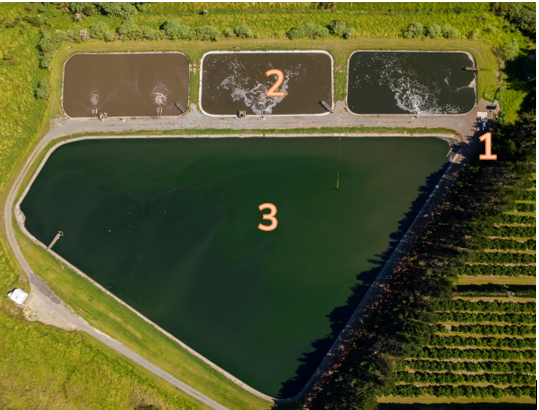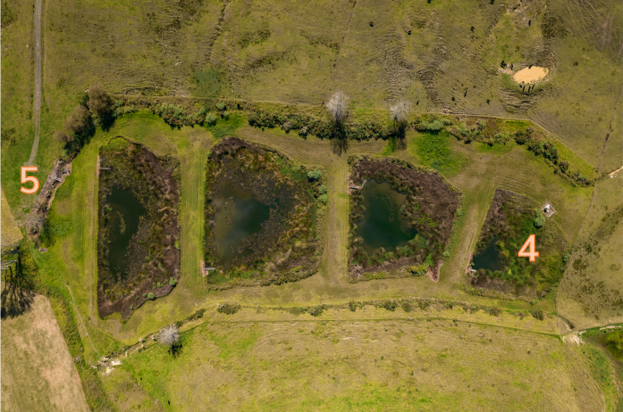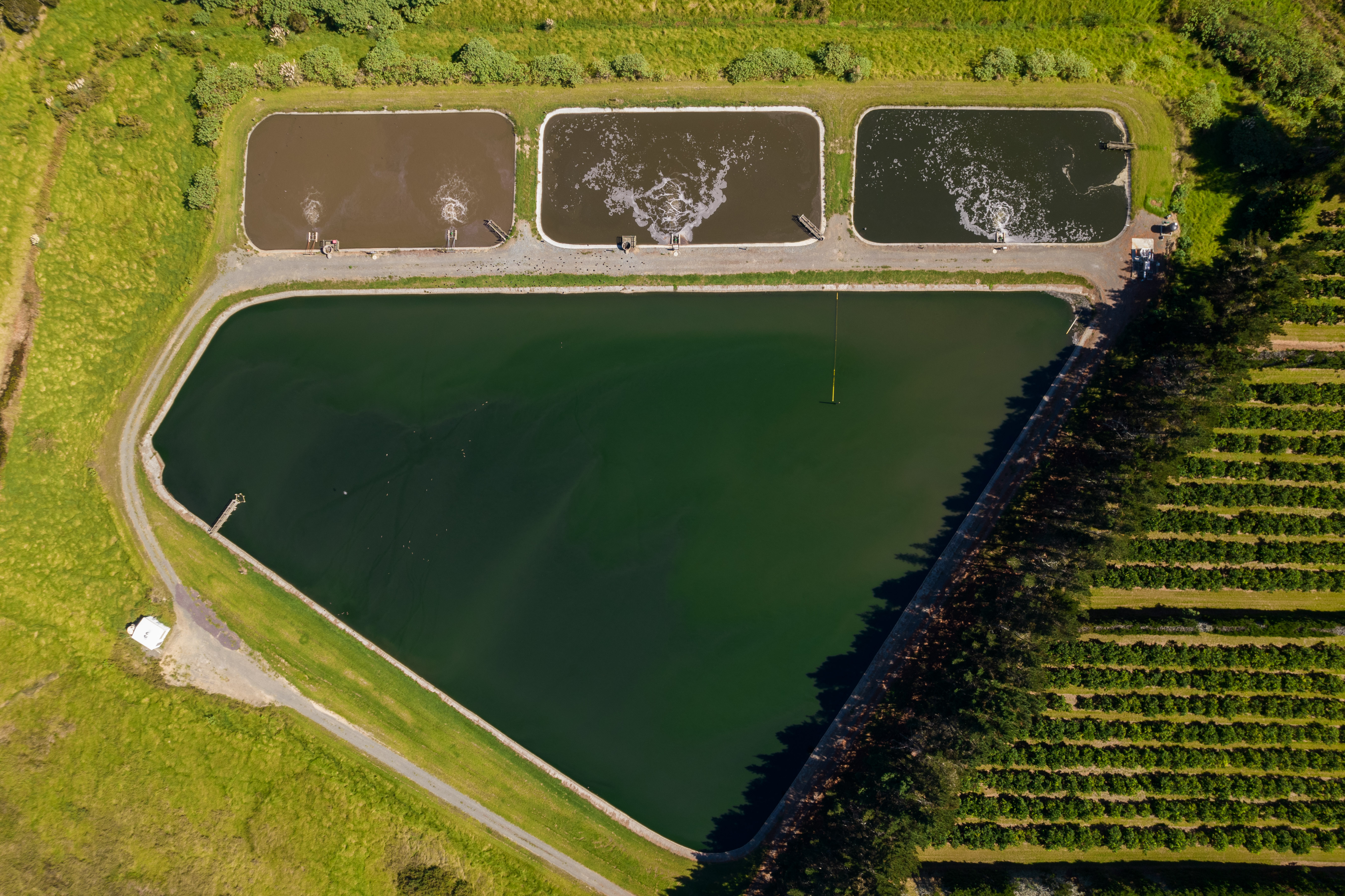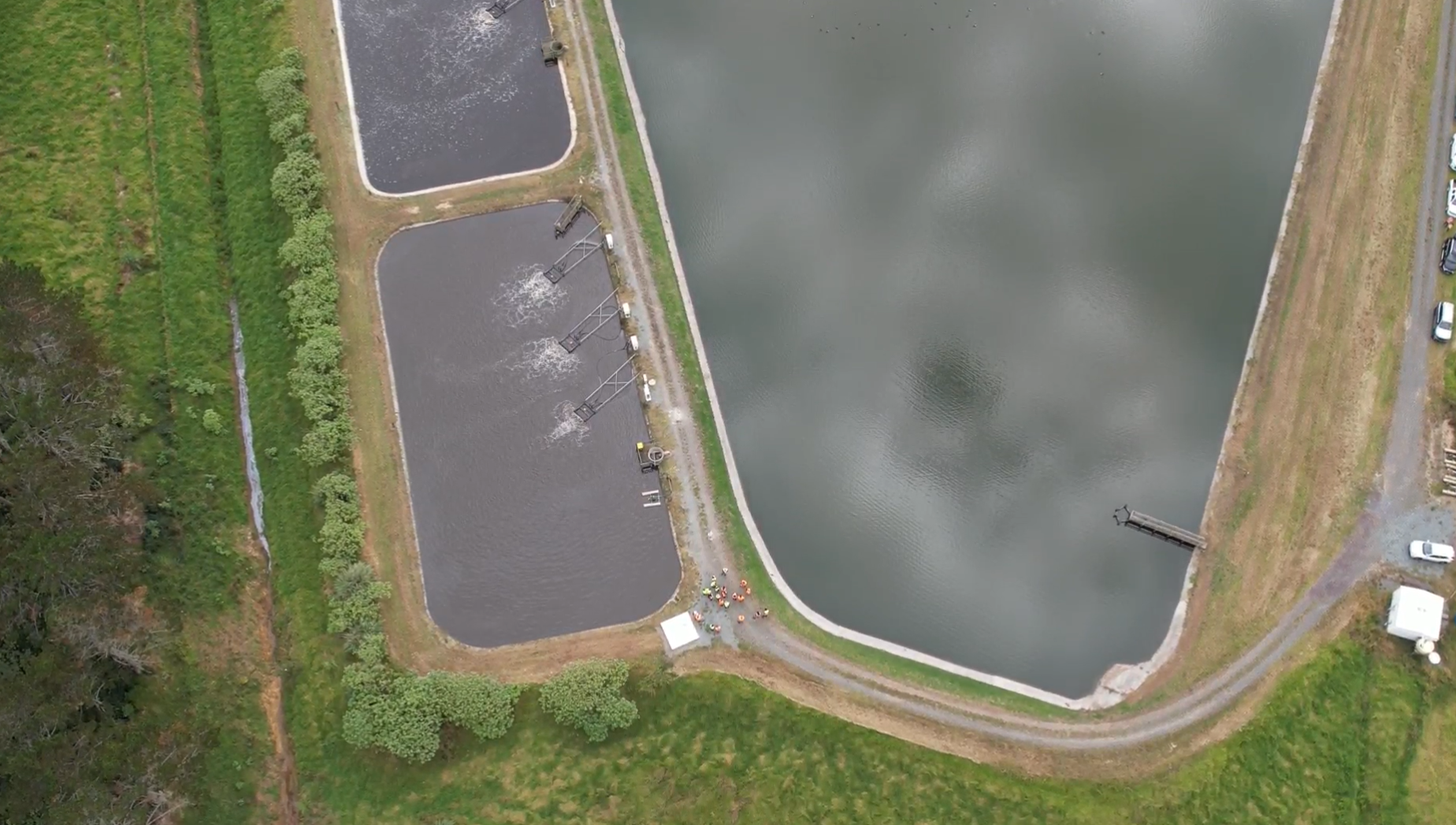Taipā Wastewater Treatment Plant
Plant overview
The Taipā Wastewater Treatment Plant (also known as the East Coast Bays Wastewater Treatment Plant) is located off Ōruru Road near the Taipā township. Wastewater from about 1500 properties within Mangōnui, Coopers Beach, Cable Bay and Taipā communities is treated here.
Treating the wastewater
At the plant the wastewater is screened to remove solids before entering the first of a series of three deep lagoons. Each lagoon is mechanically aerated to promote the biological process of breaking down the organic contaminants. From the third lagoon the wastewater is discharged into a large oxidation pond which contains no mixing or aeration.
In the oxidation pond a combination of sunlight, algae and microbes perform biological processes which continue to clean the wastewater. Wastewater will typically stay in the oxidation pond for several weeks. Sunlight and time naturally kill off harmful pathogens, while the algae and microbes consume organic matter in the wastewater.
At the outlet of the oxidation pond, the wastewater is pumped along a pipeline approximately 1km north to a series of four constructed wetlands. These wetlands are planted with native plants. Wetlands treat the wastewater by settling out suspended solids in the slow-flowing waters, microbes break down the organic matter, the wetland plants take up nutrients for their growth, and the additional time exposed to sunlight further reduces the pathogens in the wastewater.
The treated wastewater is discharged into a farm drain where it then enters an unnamed tributary of Te Wai o Te Parapara (Parapara Stream).



Sludge accumulates at the bottom of lagoons as a by-product of the treatment process. Periodic removal of sludge is required because if the ponds get too full of sludge, they cannot treat the wastewater effectively. In October 2021, the ponds were de-sludged with over 200 tonnes of dry solids removed.
Monitoring and compliance
The discharges associated with the operation of the treatment plant are authorised by a consent order. You can read a copy of the consent here. Consent conditions require regular monitoring of the volume and quality of the wastewater discharged to the unnamed tributary of Te Wai o Te Parapara.
The consent limits the volume of wastewater discharged to 790 cubic metres per day and around 500 cubic metres of treated wastewater is currently discharged each day. Council regularly reports the results of monitoring and compliance with the discharge limits to Northland Regional Council.
Treatment improvements
Monitoring shows that adequate ammonia removal is not being achieved before the wastewater is discharged, which indicates that improvements to the plant are required. Upgrade options to improve ammonia treatment are being considered by the Taipā WWTP Working Group along with other disposal options as part of the Taipā WWTP Transformation Project.
Other interim improvements planned include improvements to aeration of the three lagoons, and wetland restoration to improve the treatment performance of the wetlands. This work is expected to be completed by October 2022.
Location
46 Oruru Road, Taipa 0483 View Map



